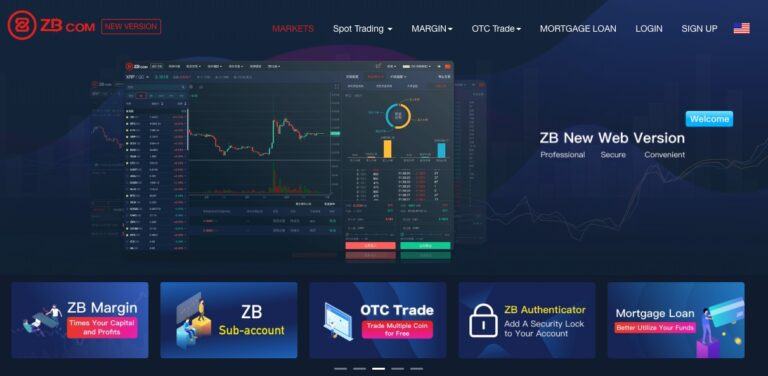As total cryptocurrency trading volumes declined during January, Binance, Huobi and Bitfinex have now suffered significant month-on-month declines in volume over the last three months, according to CryptoCompare’s latest monthly Exchange Review. Indeed, following a 15% drop off in crypto trading via its platform, Binance has now been displaced as the top volume exchange according to the data aggregation site.
Taking Binance’s place at the top of CrytpoCompare’s volume charts is, ZB.com, the somewhat controversial China-based exchange (with an eye to following its main competitor Binance to Malta), which experienced a 6.2% increase in business, bucking the general trend of the quieter January crypto scene. ZB managed a total volume of $19.6 billion, according to CryptoCompare’s numbers, at an average daily volume of $633 million. Binance totalled $17.5 billion for the month, with OKEX around a billion behind it.

Among the major exchanges, Huobi Pro’s monthly volume slipped below the $10 billion mark for the first time since CryptoCompare began compiling the report, dropping from almost $12 billion in December to around $5.6 billion. Bitfinex, however, appears to have fared the worse in recent months, having seen close to $12 billion in volume during November, it fell to under nine in December, and lost almost half of that during January, leaving it outside of the Top 10.

In Autumn of last year, Blockchain-watchers began to call into question the volumes on ZB.com, with a CER report on the exchange’s “magic volume” alleging its teams “found definite patterns of unnatural and obviously artificial trade volume performance on 10 out of the top-20 most-traded exchange’s pairs.”
Even during January, one particular day of trading in QTUM – where the volume spiked to USDT 120 million – raised eyebrows. You can see the spike clearly on the CryptoCompare chart.

What’s up with this volume? $qtum $btc pic.twitter.com/BTbHYqSv54
— Crypto Minion (@Crypto_Minion) February 11, 2019
However, another contributory factor to the rise of ZB appears to be a marked downturn in trading volume for exchanges that offer fiat pairs; volumes on those exchanges decreased by 26.5% in January, while crypto-to-crypto exchange volume decreased by just 7.2% in comparison. In general, the crypto-to-crypto exchanges represent a much larger market, with at total trade of $132 billion during January compared to $37.5 billion for those offering fiat trading pairs – meaning fiat-crypto trading represented 22% of total spot volume during the month, down from 26% in December.

Indeed, trading in Tether (USDT) – though decreasing – still dominates the crypto space as a whole, accounting for 65% of the total business across all the exchanges aggregated by CryptoCompare. Its share is up slightly on December, corresponding to a marked reduction in US dollar trading. Interest in Japanese Yen pairs rose, according to the numbers, while other options remained relatively stable.
While Tether’s share of the entire market rose, its dominance of the Stablecoin sector took another chip. While usage of Gemini’s GUSD and Circle’s USDC appeared proportionately steady, it would appear that PAX confirmed itself as the main pretender to Tether’s throne, with another month-on-month move into it’s market share. Admittedly, it has a long way to go, as Tether still accounts for 97.6% of all stablecoin-crypto trading, but from a standing start in October, PAX now holds nigh-on 2% of the sector.

Away from the main exchanges, the interest in Decentralised options remains negligible. DEX’s account for just 0.19% of all crypto volume in January, with Ethermium remaining the number on choice, followed by WavesDEX and Open Ledger. The combined market, however, totalled just $385 million for the month.









